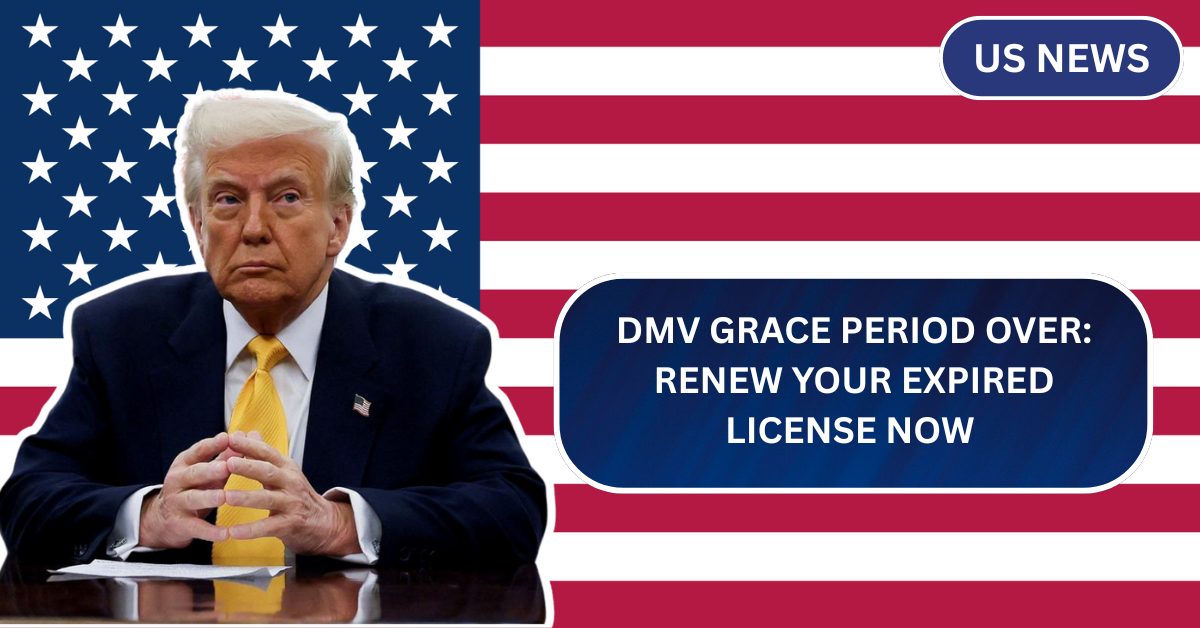If you’ve been driving around with an expired license, thinking it’s no big deal because of the DMV grace period, it’s time to stop and pay attention. The United States Department of Motor Vehicles (DMV) has officially ended the extended grace period that allowed drivers to continue using their licenses even after expiry. This temporary relaxation was introduced during the COVID-19 pandemic, but now, it’s being rolled back.
Why Was There a Grace Period?
When the pandemic hit, DMV offices across many states were either closed or had limited services. As a result, many drivers couldn’t renew their licenses on time. To deal with this, most DMVs introduced a grace period — allowing people to legally drive even with an expired license, often for 60–120 days beyond the expiry.
This measure helped reduce the pressure on both citizens and state offices. But now, normal operations have resumed, and the DMV is taking back that flexibility.
What’s Changing Now?
From June 2025, most state DMVs are no longer offering any additional grace period after your license expires. That means:
- Driving with an expired license is now illegal
- Fines and penalties will apply immediately after the expiration date
- You may face issues with insurance claims or during police checks
- Some states may even suspend your driving privileges
Each state might have slightly different rules, but the overall guidance is the same – renew on time, or pay the price.
What Are the Penalties?
The penalties for driving with an expired license vary from state to state, but here’s what you can generally expect:
- Fines ranging from $50 to $500
- Points added to your driving record
- Court appearances for serious delays
- Possible vehicle impoundment in some states
- Delayed license reinstatement, affecting your work or personal travel
For example, in California, drivers could be fined up to $250 if caught driving with an expired license. In Texas, penalties can go even higher, especially if it’s not your first time.
How to Check Your License Status
If you’re unsure about when your license expires, don’t wait for a reminder. You can easily check your license status online through your state’s DMV website. Many sites offer online renewal options, which can help you skip the queue.
Some helpful steps:
- Visit your local DMV website
- Log in using your driver details
- Check the expiration date
- Follow the steps for renewal (some may allow online renewals)
How to Renew Quickly
If your license has already expired or is about to expire, here’s what to do right away:
- Gather Required Documents: Usually includes proof of identity, residency, and current license
- Book an Appointment: Some DMVs still require appointments for in-person renewals
- Pay the Fees: Renewal fees vary by state (typically $25–$60)
- Complete Vision Test: In-person renewals may require a basic eye test
- Renew Online If Eligible: Many states offer quick online renewals for eligible drivers
Who Might Still Qualify for a Short Extension?
While most states have ended blanket grace periods, a few might still offer limited exceptions — like extensions for military personnel or those living abroad. You’ll need to check with your state DMV directly to see if any exceptions apply to your case.
Final Words: Don’t Risk It
Driving with an expired license might not seem serious until you’re pulled over or denied an insurance claim. Now that the DMV has officially ended its pandemic-era grace period, it’s more important than ever to stay up to date.




